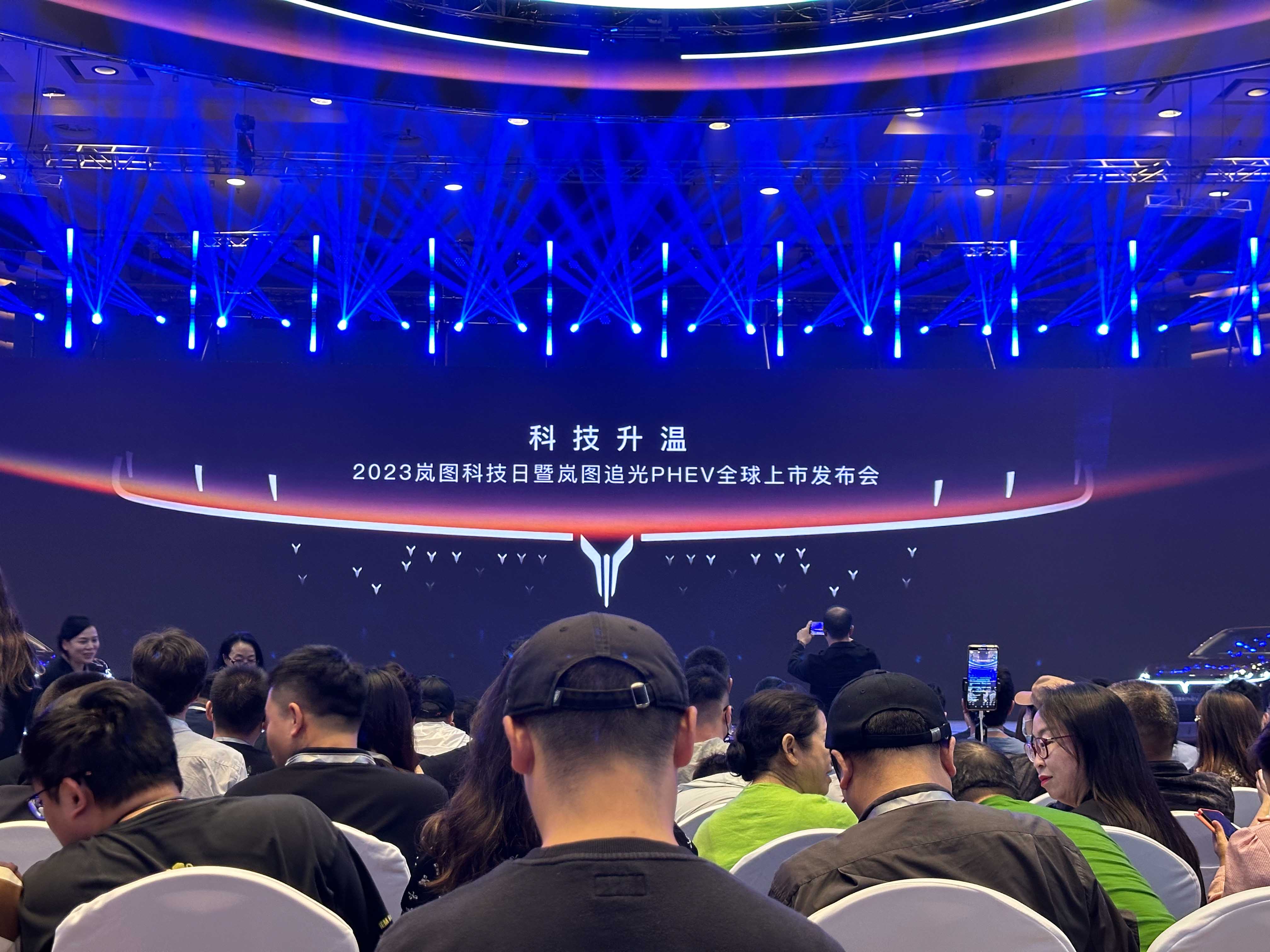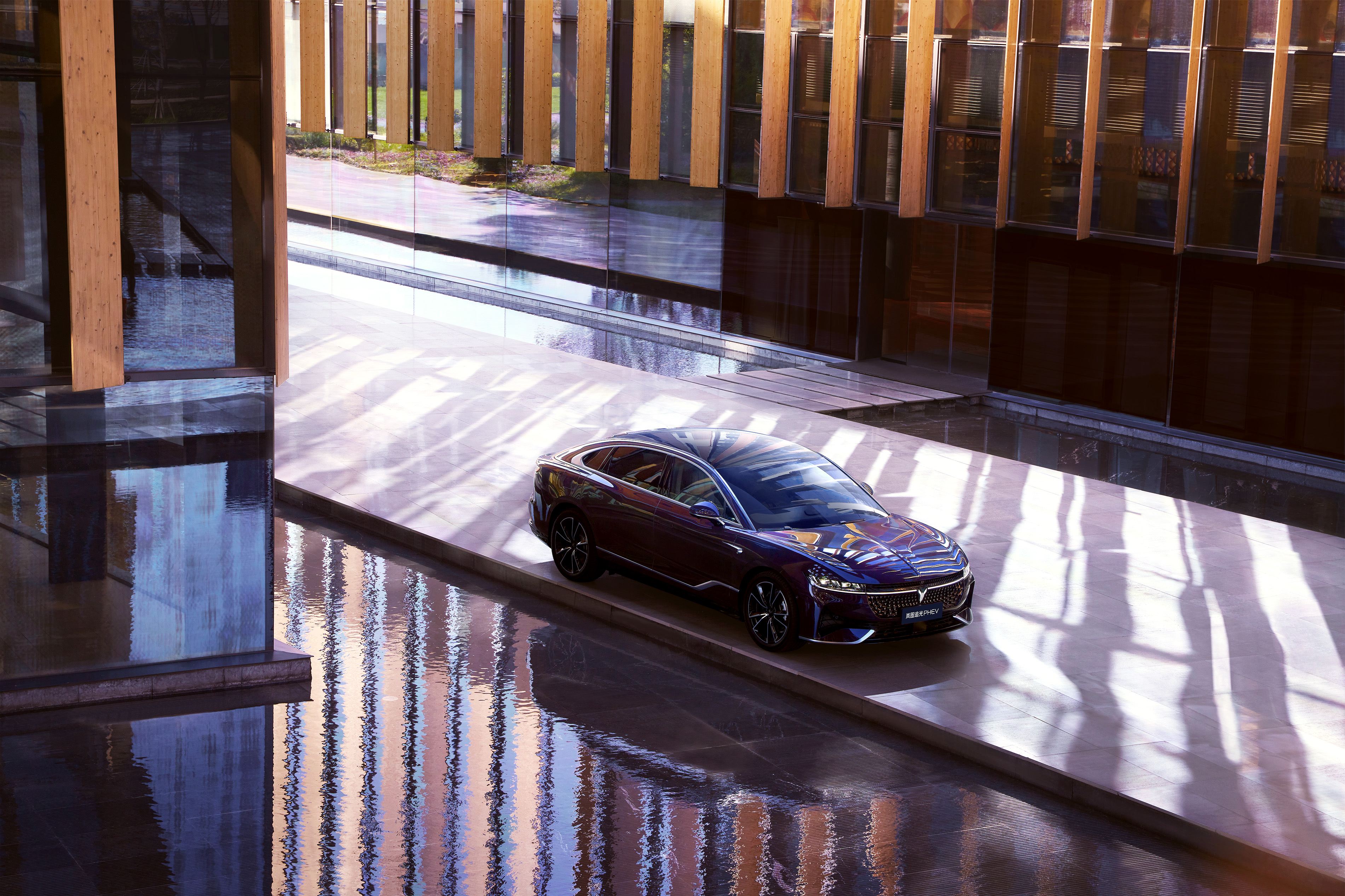On December 5, 2023, VOYAH unveiled their self-developed Tianyuan SOA architecture at Technology Day, bringing about a host of innovative possibilities for VOYAH’s new vehicles. They’ve established a developer mode, allowing for additional user-facing features through software and hardware integration. By the end of next year, they expect to launch features like map-free city NOA, commuting mode, and multi-level long-distance memory parking. This progress is truly remarkable for a company like VOYAH, which originated from a traditional state-owned enterprise.

After the event, we were privileged enough to interview VOYAH’s CTO Wang Junjun, COO Jiang Tao, and Assistant GM Li Boxiao. We discussed their future strategies, intelligent driving direction and product strategy.
On Intelligent Driving
Q: Can you share the progress of VOYAH’s map-less NOA? How many cities will be incorporated and on which vehicle model?
Wang Junjun: Before the end of next year, we’re planning to introduce a city NOA, we will elaborate further in due course.
Q: What will the future cooperation ratio be with Baidu Apollo in the realm of smart driving?
Wang Junjun: At VOYAH, we’ve decided to ‘walk on two legs’; one leg staunchly rooted in our own research and development, the other seeking external cooperation. Currently, VOYAH FREE is working in collaboration with Baidu Apollo. However, for our follow-up, more independent development has been done. We’re primarily in charge of the control and HMI-related aspects, while our other responsibilities involve collaborative efforts with our vague ecosystem partners.
On Tianyuan Architecture
Q: VOYAH’s developer platform has officially launched, what’s the current scenario and what changes can it bring to our future products?
Wang Junjun: As for the platform, we already have nearly 30 modules and over 600 interfaces, with 6 main developer partners now part of our platform. With the developer platform, our primary advantage is the creation of an architecture that can grow organically based on software-hardware decoupling. It can dig deep into the potential of our Tianyuan architecture, delivering a characteristic and practical experience to our customers. In addition, our entire developer platform allows for network editing on mobiles, car computers, and PCs. We’ve also made our entire toolset and database highly user-friendly.
Q: Where does Tianyuan architecture lead? Does Zhiguang, the first car model with an SOA architecture, have any technical highlights?
Wang Junjun: On the hardware level, Tianyuan architecture is, domestically, the first five-domain integrated hardware, consisting of one OIB and 4 VIUs. Many domestic companies are doing similar integrations, but our integration has proven to be the most challenging. Post-integration, it not only reduces costs and shortens wiring, but also facilitates future iterations.In terms of software, our architecture is based on SOA, transforming conventional communication-oriented frameworks into a service-based one. This approach truly facilitates the decoupling of software and hardware.
Revolving around our Tianyuan chassis, numerous possibilities potentially exist in the future. Currently, our R&D is focused on smart cockpit technology that could drastically enhance the overall experience — from improved voice and performance on all fronts.
About VOYAH iFree
Q: “Among various automakers, some have differentiated through pricing, while others through established values. How about VOYAH?”
Jiang Tao: VOYAH undoubtedly positions itself as a premium brand. We would not blindly lower our prices, but rather ensure that each model could compete in their respective market segments. We aim to secure a certain market share with every vehicle we produce.
Q: “VOYAH’s iFree utilizes a range extender approach, while iDREAM and iLIGHT use a PHEV approach. Considering the differences in tech routes, will VOYAH further develop along both paths?”
Wang Junjun: I personally believe that using a range extender or PHEV depends on different scenarios; it’s tough to identify which is superior. Given the historical context, iFree adopted a range extender; however, for iLIGHT and iDREAM, we designed them to support both PHEV and range extenders. In the future, we will choose according to specific scenarios and user needs — we won’t dismiss the range extender approach but also staunchly support pursuing a PHEV route. Ultimately, our primary goal is to deliver valuable products to customers through the best tech routes.
Q: “Many local automobile brands are moving towards premiumization. Compared to high-end international brands, what advantages does VOYAH possess?”
Jiang Tao: We’ve cultivated a substantial team, mastering capabilities such as automotive research and development, production licensing, and automobile components. Therefore, we have the ability to produce our own vehicles, possibly better than foreign luxury brands. Our products have been improving with attention to detail, which wouldn’t fall short next to luxury brands. Compared to international brands, we have a better understanding of local consumers and thus have a faster iteration pace. Our main advantages include our development on an EV basis, our smart cabin technology, and features like air suspension.
Q: “DF has a clear plan for solid-state batteries. What is VOYAH’s plan?”
Li Boxiao: The earliest usage of semi-solid-state batteries in China should have been on the iLIGHT with its 86 kWh battery.
Q: “Do you have a specific plan for channel strategy in order to achieve annual sales of 100,000 units?”
Li Boxiao: In terms of channels, we divide it into two segments – domestic and international. Domestically, we have established around 285 to 290 stores in tier one, two and three cities, which could support sales and subsequent servicing requirements. We plan to further expand our channel layout next year to meet rising demands. We insist on a dual-loop strategy, which includes traditional 4S stores for sales, maintenance and delivery, and a commercial circle to meet customer demand for car viewing.Regarding overseas, in addition to the developed countries we have already entered, our next target is particularly clear, which is to enter priding nations like France. Moreover, we will be launching new models overseas next year. Including Dreamer, we have obtained the corresponding whole car export certification in Europe. Our overseas deployment is based on long-termism, and we hope to represent the national team to change the image of Made in China, including Chinese automobiles.
Q: What are the advantages of VOYAH iFree PHEV as a high-end luxury hybrid sedan that competes against BBA?
JunJun Wang: Firstly, as a hybrid model, VOYAH iFree PHEV is from a pure electric platform. Actually, among hybrids of this level, VOYAH CLTC’s 262 km range of pure electric use is probably the pinnacle in this field.
Secondly, the 56E for fighting BBA has a lot of advantages in intelligence, whether it’s intelligent cabin or smart driving. Additionally, there’s the over-level luxury of VOYAH, which also has advantages in car length and space; it is our core selling point.
Developer mode, using protocols based on the VOYAH Tianyuan structure, brings personalized experiences for users. This improves the experience with the car.
We persist in increasing the input for high-end brands in terms of sales; VOYAH’s brand recognition and reputation have rapidly increased within this year. In terms of product strength, we also have advantages. The manufacturing system and supply chain system make it convenient for VOYAH to participate in competition. We are determined to enter overseas markets and compete with BBA, which can instill confidence in the domestic market. Now we have mastered key vehicle manufacturing technology and are capable of making our own cars. This means we can make a better car than BBA, especially regarding quality control and other details. Compared to overseas luxury brands, we understand Chinese people better. At the same time, our iteration speed is particularly fast, and our configuration breakthrough brought the price down.
Q: VOYAH’s sales have been increasing since June, and it reached a new high last month. Are there any key factors behind this upward trend?
BoXiao Li: First and foremost, we insist on being a high-end brand, and we will continuously increase our investments on the brand end. From third-party data, our own research, user feedback, and market research, VOYAH’s brand recognition and reputation have seen rapid growth this year. We will continue to invest in our brand in the future. The second point that I think we’re doing right is in terms of product strength. Regardless of whether it’s VOYAH iFree PHEV, new VOYAH FREE or new Dreamer, each car has competitive strength in niche markets, which stems from our comprehensive manufacturing system, supply chain system, and good technical reserves. The third point that we’re doing well in is our dedication to focusing on user-centric enterprise development.
This year, we have done a lot of work in creating with users, sharing with users, and building with users, including forming a user innovation committee. These are rare in our country. Through such a quasi-official organization, we can promote our internal various reforms and product improvements, including many suggestions coming from the end-user. We will continue to do such things in the future.The fourth initiative we are undertaking, which we firmly believe will enhance and benefit VOYAH, is our determined expansion into overseas markets, especially in developed European countries.
Presently, we have penetrated into markets like Finland, Israel, Denmark, Norway, and countries like Germany, Italy, and France. We are not only hoping to sell our vehicles but also aiming to compete head-on with BBA in these developed markets. Establishing a firm foothold there will also boost our domestic market indirectly, instilling confidence in our national brand.
Final thoughts
This interview provides a glimpse into the ambition of VOYAH. The sales targets of 10,000 units per month, and 100,000 units annually. Behind this stands VOYAH’s precise positioning of its products within niche markets.

In the rapidly evolving environment of smart technology, VOYAH acknowledges its shortcomings, realizing that just emphasizing safety and craftsmanship is not sufficient. Therefore, they have developed the Tianyuan architecture and focused on software improvements. Moreover, they have capitalized on the user co-creation advantage by launching a developer mode, allowing more useful features to be swiftly integrated into the vehicles. For the intelligent driving segment, VOYAH is among the few conventional automakers to have proposed that it will roll out the map-less city NOA next year. All these strategies highlight VOYAH’s determination to make inroads in the domestic market.

In the interview, VOYAH continuously emphasized its ambition to expand, to compete with BBA abroad, specifically in countries like Germany, Italy, and France. Regardless of the challenges or the end results, the company’s determination alone is commendable.
This article is a translation by AI of a Chinese report from 42HOW. If you have any questions about it, please email bd@42how.com.
